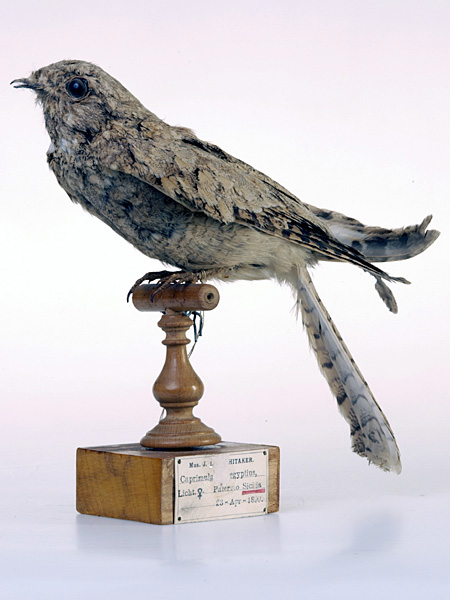- Egyptian Nightjar
Taxobox
name = Egyptian Nightjar

status = LC | status_system = IUCN3.1
regnum =Animal ia
phylum = Chordata
classis = Aves
ordo =Caprimulgiformes
familia = Caprimulgidae
genus = "Caprimulgus "
species = "C. aegyptius"
binomial = "Caprimulgus aegyptius"
binomial_authority = Lichtenstein, 1823The Egyptian Nightjar, "Caprimulgus aegyptius", is a medium-smallnightjar which occurs in south westAsia and northAfrica , and winters in tropical Africa. It is a late migrant, seldom appearing before the end of April or beginning of May. It is a rare visitor toEurope , but, remarkably, has twice occurred as far away asGreat Britain .Open desert with a few trees or bushes are the haunts of this
crepuscular nightjar. It flies at dusk, most often at sundown, with an easy, silentmoth -like flight; its strong and deliberate wingbeats alternate with sweeps and wheels with motionless wings.The variegated plumage is much paler than the
European Nightjar . The adult is sand-colours, barred and streaked with buff and brown. The under parts are sandy or whitish. It is smaller, but relatively longer-winged and longer-tailed than the more widespread species. Like other nightjars, it has a wide gape, long wings, soft downy plumage and nocturnal habits. The male has tiny white wing spots. The length is 25cm, and the wingspan 55cm.Its call is a repetitive mechanical "kroo-kroo-kroo…", which rises and falls as the bird turns its head from side to side. Crepuscular insects, such as
moth s, are its food.During the day this nightjar lies silent upon the ground, concealed by its plumage; it is difficult to detect, blending in with the sandy soil. No nest is made; the two elongated and elliptical eggs are placed upon the bare ground; the brooding bird, sitting closely, is their best protection.
References
* Database entry includes justification for why this species is of least concern
Wikimedia Foundation. 2010.
